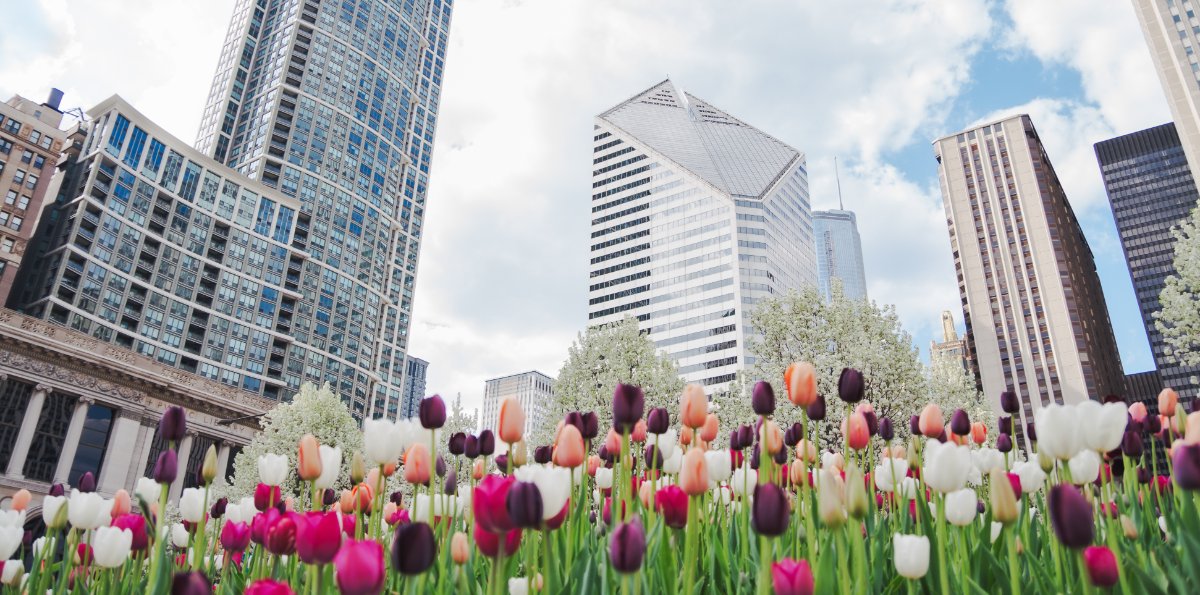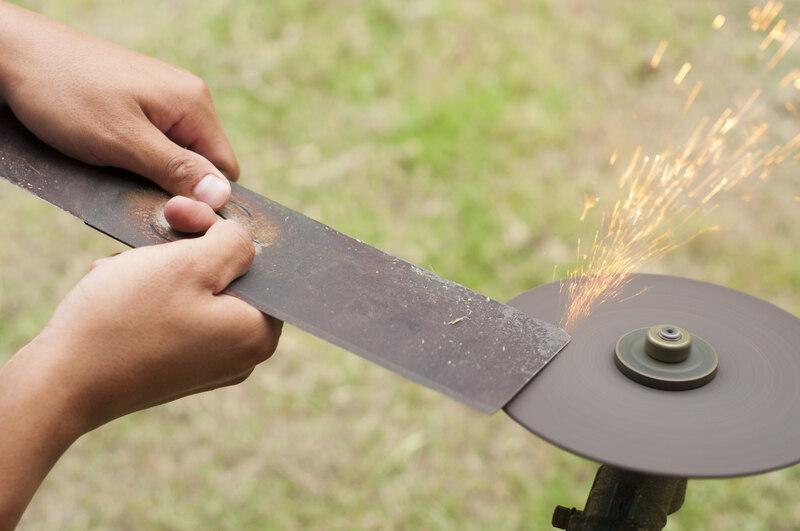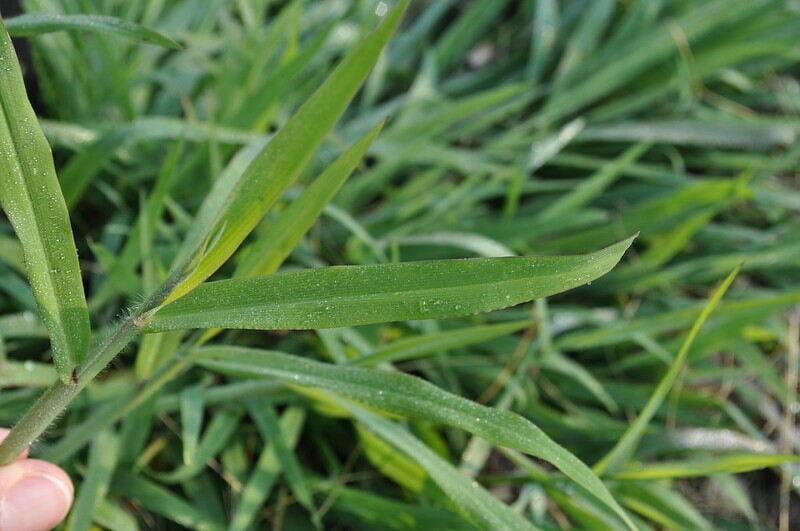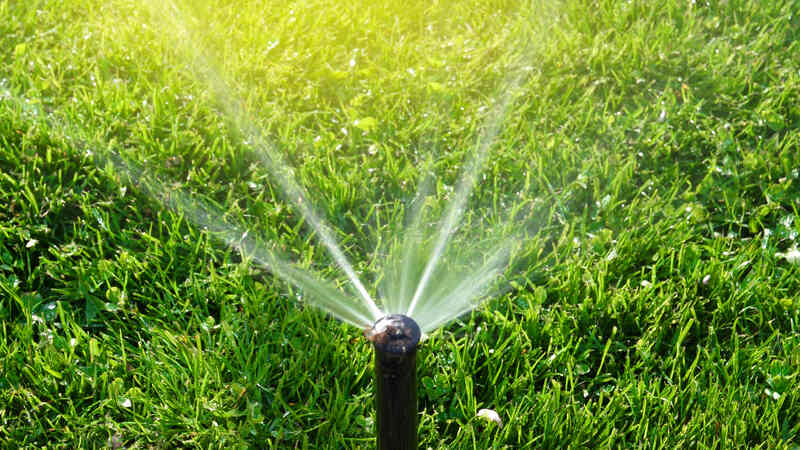
Soon the scent of the season in Chicagoland will be a newly mown lawn. But before then, there’s much to do in your yard – and to get your mower ready for cutting season.
Follow these 7 spring lawn care tips in April and May to make sure your Chicago lawn will be in tip-top shape for the rest of the year.
Cool-season grasses common in Chicago – Kentucky bluegrass, fescues, and perennial ryegrass – need to develop a strong root system in spring to survive summer’s heat and dry conditions, the Chicago Botanic Garden’s Tom Fritz notes.
That’s why spring lawn care is so important here.
1. Clean Up Your Lawn
Think of this as an outdoors version of spring cleaning.
Give your lawn a good – but gentle – raking to remove dead grass or other plant debris that landed there through winter.
Our Chicago winters can be brutal, so look for lawn damage from rock salt – brown, discolored, dead, or thin patches – along the edges of sidewalks, driveways, and roads.
To repair this salt damage to your turf, you’ll need to flush as much salt from the grass roots, apply gypsum to neutralize the salt, topdress, and overseed the affected areas.
See Related:
– Signs of Salt Damage to Your Lawn
– How to Repair Salt Damage on Your Lawn
2. Reseed Bare Spots

After winter, your grass may have a few thin spots (unrelated to salt) that you can fill in by spreading new grass seed.
But what kind of grass seed? The Chicago Botanic Garden recommends:
- For full sun areas: a mix of Kentucky bluegrass and perennial ryegrass.
- For shady areas: fine fescues
- Part sunny and part shady areas: Kentucky blue, perennial ryegrass, and a fine fescue.
Once you have the right grass seeds, prep your lawn’s bare spots by roughing up the soil. Add a slight mound of topsoil or compost, then sow your grass seed.
See Related:
– How to Repair Thinned Areas and Bare Patches
3. Aerate the Ground

Core aeration is the most common method of poking holes in the ground to better allow absorption of nutrients and oxygen. This helps reduce soil compaction and thatch.
Fritz, from the Chicago Botanic Garden, recommends aerating the ground twice a year, in spring and fall.
Note: Renting an aerator from Home Depot costs about $110 a day, or LawnStarter customers can book aeration in Chicago easily online or in our app.
See Related:
– What is Aeration? [Video]
4. Get Your Mower Ready

Prepare your mower for the Chicago grass-cutting season, which typically starts in late April or early May.
Here’s what to do:
- Sharpen the blades of the mower and clean the underside of the deck.
- If you have a gas-powered mower, replace the oil and spark plugs and clean or replace the fuel and oil filters.
- For battery-operated lawn mowers, charge the battery.
Set your lawn mower’s height to the right height for your grass type, the University of Illinois Extension Office recommends. Keep it that height all season, the U of I Extension adds.
University of Illinois Recommended Grass Heights
| Grass | Recommended Mowing Height |
| Kentucky bluegrass | 2-3 inches |
| Tall fescue | 2.5-3.5 inches |
| Creeping red fescue (a fine fescue) | 1.5-2 inches |
| Perennial ryegrass | 2-3 inches |
See Related:
– How to Sharpen Mower Blades
– Best Ways to Clean a Lawn Mower Deck
5. Apply Fertilizer
Spring fertilization here in Northern Illinois is best after mid-May, according to the University of Illinois Extension, but that is only if your grass needs it.
U of I’s cool-season grasses fertilization schedule depends on your lawn’s density. (Low-density lawns don’t need spring fertilization.)
- Low- to moderate-density lawns need fertilization 2 times: Once in spring and once in late summer to early fall.
- Moderate- to high-density lawns need fertilization 3 times: Once in spring, once in late summer to early fall, and once in late season.
- High-density lawns need 4 fertilization treatments: Once in spring, once in early summer (only with irrigated lawns); once in late summer to early fall, and once in late season.
Yes, LawnStarter offers lawn fertilization in Chicago. This will save you choosing the right fertilizer for your grass and the time spent applying fertilizer.
See Related:
– How to Fertilize Your Lawn
6. Block Weed Growth

April showers bring May weeds.
Here’s how to treat them:
For annual weeds, like these, apply a pre-emergent herbicide in spring to keep weed seeds from germinating.
- Crabgrass
- Purple nettle
- Henbit
When to apply this pre-emergent? About the time forsythia blooms in Elmhurst, Tinley Park, Oak Park and other Chicago enclaves.
For perennial weeds, like dandelions, it’s best to apply a pre-emergent in the fall.
See Related:
– How to Identify that Weed in Your Yard
– How to Get Rid of Crabgrass
– How to Get Rid of Dandelions
7. Water Your Lawn

Grass needs water to grow and green up, so get your sprinklers ready.
Restart your irrigation system: You likely winterized your sprinkler system, so you need to turn on your water and set your timer again.
Set up irrigation zones: Your lawn usually needs more water than your trees, shrubs and perennials, so set your irrigation zones accordingly.
Water at the right time: Set the timer to water early in the morning to reduce evaporation and save water. Water only on the days allowed and during the hours specified by your city or municipality.
How often should you water your lawn? “1 time a week in spring,” says LawnStarter Chicago Pro David Solomon of Solomon’s Services. If you have a new lawn, either from seed or sod, he recommends you “water it frequently.”
How much water does your grass need? The University of Illinois Extension recommends 1 to 1½ inches of water a week for your Chicago lawn. That can be delivered in two 30-minute sessions a week.
See Related:
– Best Time to Water Your Lawn
– How Often to Water Grass Seed
Lawn Care Is a Lot of Work. Hire a Pro
Yard cleanups, restarting sprinklers, fertilizing, aerating, and mowing your lawn – that’s a lot of work and time lost in your yard on weekends. Let LawnStarter’s Chicago lawn care pros do your yard work.
LawnStarter’s local lawn care pros are mowing lawns and keeping grass green and healthy all across Chicagoland, from Tinley Park to Naperville to Aurora to Des Plaines. Professional lawn care help is just a few clicks or a quick call away.
Sources:
- – Spring Lawn Care for Homeowners, Chicago Botanic Garden
- – Fertilizing Your Lawn, University of Illinois Extension
- – Managing Weeds, University of Illinois Extension
Read Next:
– Summer Lawn Care Checklist for Chicago
– Best Grass Types for Chicago Lawns
Main Image: Tulips and blooming trees during springtime in downtown Chicago. Photo Credit: espiegle / Adobe Stock